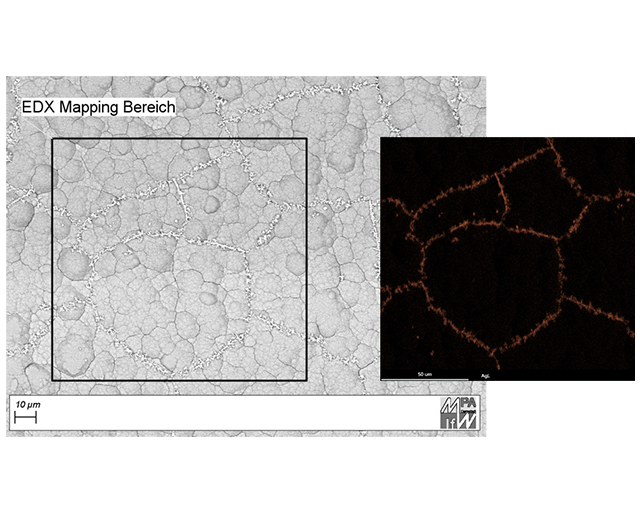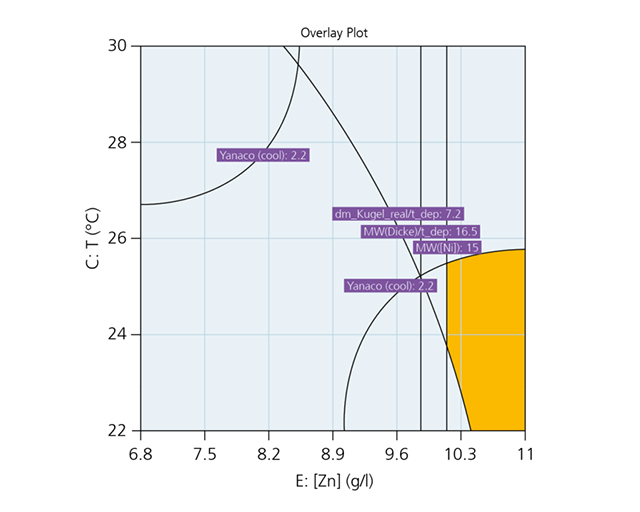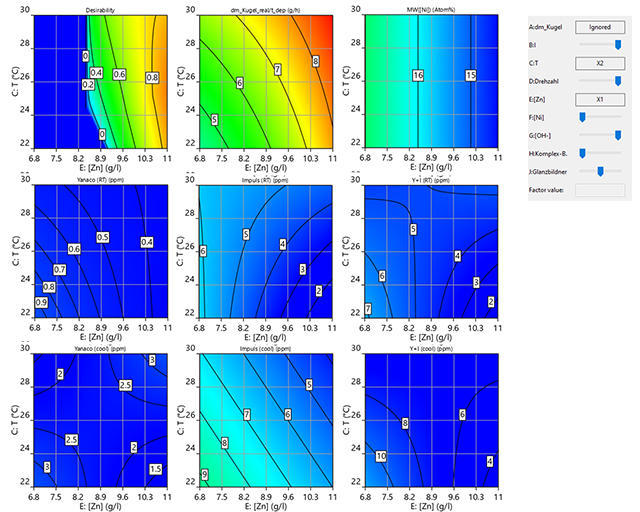The basis for the safe application of high-performance steels is reliable corrosion protection that is stable over the long term. This can be ensured by means of galvanic zinc-based coatings. However, during the coating process, hydrogen enters the material, increasing the risk of fractures due to hydrogen-induced stress corrosion cracking (HI-SSC) as the strength of the steel increases. In the IGF (cooperative industrial research) project ”HAEgaS”, systematic investigations were carried out to determine the critical conditions of the operating materials and coating parameters.
Optimizing electroplating processes by understanding the potential for hydrogen hazard

Current handling of production-related hydrogen hazard potential
By means of post-production heat treatment, the introduced hydrogen can be stimulated to effuse so that it does not cause any damage to the material. However, treatment parameters are set on a purely phenomenological basis due to lack of knowledge. The effectiveness of process control and heat treatment could alternatively be verified by the stress tests described in DIN 50969-2. However, continuous in-process inspection is time-consuming and costly, because fractures due to HI-SCC can still occur even after a stressing time of 200 hours.
Systematic analysis of process-related influences on hydrogen uptake
Within the ”HAEgaS” project, the galvanic zinc-nickel coating of steel was investigated at the Fraunhofer IST using statistical design of experiments methods. With this methodology, hydrogen absorption and effusion behavior of the coated steels as well as composition, coating rate, chemical consumption and other important parameters of coating and process could be described and optimized as a function of a total of eight factors. In addition to temperature, current density and barrel rotation speed, the bath composition was investigated in detail, i. e. the concentrations of Ni, Zn, OH, complexing and brightener additives.
Determining critical conditions for operating materials and coating parameters
The statistical evaluation of the results with regard to the significance and weighting of the influencing factors makes it possible to quantify the individual variables influencing the process. In addition, the type of operating materials used allows conclusions to be drawn concerning the resulting coating properties in general and the hydrogen absorption and effusion behavior in particular. This in turn permits the development of feasible intervention limits for the processes to counteract increased production-related hydrogen absorption.

Outlook
Taking the data generated in this project and the resultant findings as a basis, further projects are planned to develop the continuous representation of the process chain by means of a digital twin. This will include a combination of simulation models and data-based maps for the electroplating mechanisms acting on different time and length scales. This will consequently enable a targeted post-treatment to be derived to minimize H-SpRK and will also further optimize costs and energy expenditure.
The project
The IGF project ”HAEgaS” (19759 N) of the Forschungsvereinigung Forschungsgesellschaft Stahlverformung e.V. was funded by the German Federal Ministry for Economic Affairs and Climate Action (BMWK) via the German Federation of Industrial Research Associations (AiF) as part of the program to promote cooperative industrial research (IGF) on the basis of a resolution by the German Bundestag. The research institution involved in addition to the Fraunhofer IST was the Technical University of Darmstadt, State Materials Testing Institute Darmstadt. The project monitoring committee comprised 18 members.
This article is part of the Annual Report 2021.

